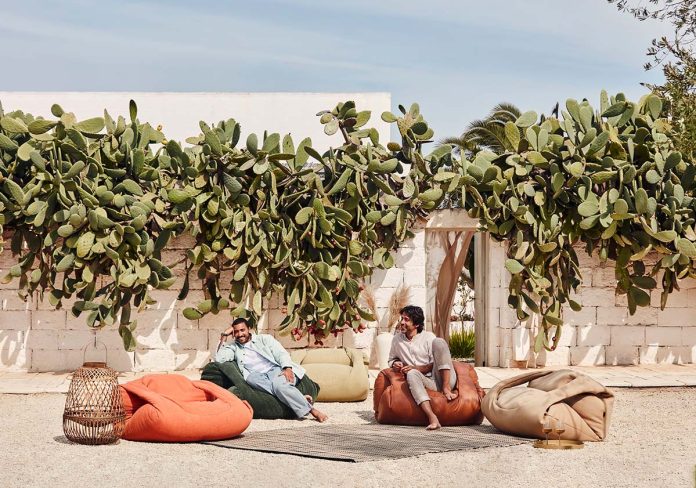It might be called ‘self-responsible.’ Terra, to ottoman created by the Italian artist-designer for Natuzzi, reveals the sentimental and sustainable visage of art design. Summing up the company’s new design philosophy, oriented towards production that protects the environment in increasingly coherent and concrete ways, the soft, rounded lines of the piece are made in rigorously ecological and recycled materials, as part of the new Circle of Harmony – Second Life collection. A clear assertion of position, stated in the evocative installation Germogli, made by the artist during the days of Design Week in the courtyard of Palazzo Durini Caproni di Taliedo, home of the Natuzzi showroom. We talked about it with Marcantonio.
What did you want to communicate with the Germogli installation?
Sprouts (germogli) are a forceful positive image of birth. I imagined them in giant size because I wanted to create a magical, dreamy atmosphere. I wanted people to feel protected by great nature, and at the same time to feel like little ants. In the Renaissance there were botanical references in all stuccowork, any bas relief, an organic swarm that enhanced that period of great literary and technical artistic production. I thought about sprouts with this hope for a return to a positive period of great creativity for all of us. I might add that the sprouts are olive plants, to raise awareness of the problem of Xylella that has killed thousands of olive trees in Puglia.
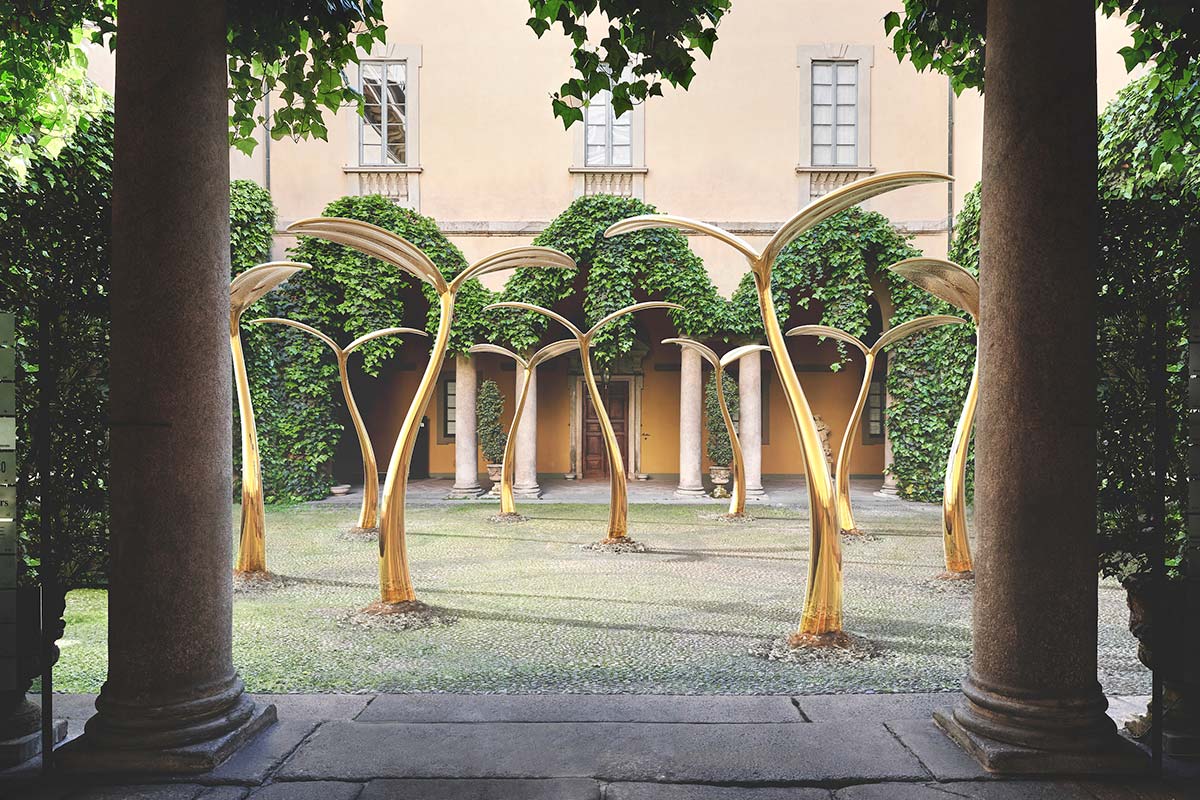
Terra is part of Second Life, the expression of a path taken by Natuzzi towards sustainability. Let’s start with the form – was it a suggestion of the company, choosing the circle as a symbol of harmony?
The Circle of Harmony collection definitely embodies a message Natuzzi wants to transmit: a circle of inclusion, an embrace, an invitation to enter. A circle that is also that of the ‘second life,’ that closes in order to respect nature. Unconsciously, perhaps, I created an ottoman based precisely on this welcome, because the armrests form a hug and the form effectively evokes the circle, in which to sit at the center.
How did you develop the idea?
Natuzzi’s request was to create an ottoman formed only by fabric and filler, without a structure or a shell. I began drawing and I realized it would be hard to adapt to a seated person, so I began sewing, making small prototypes, until the form gradually emerged.
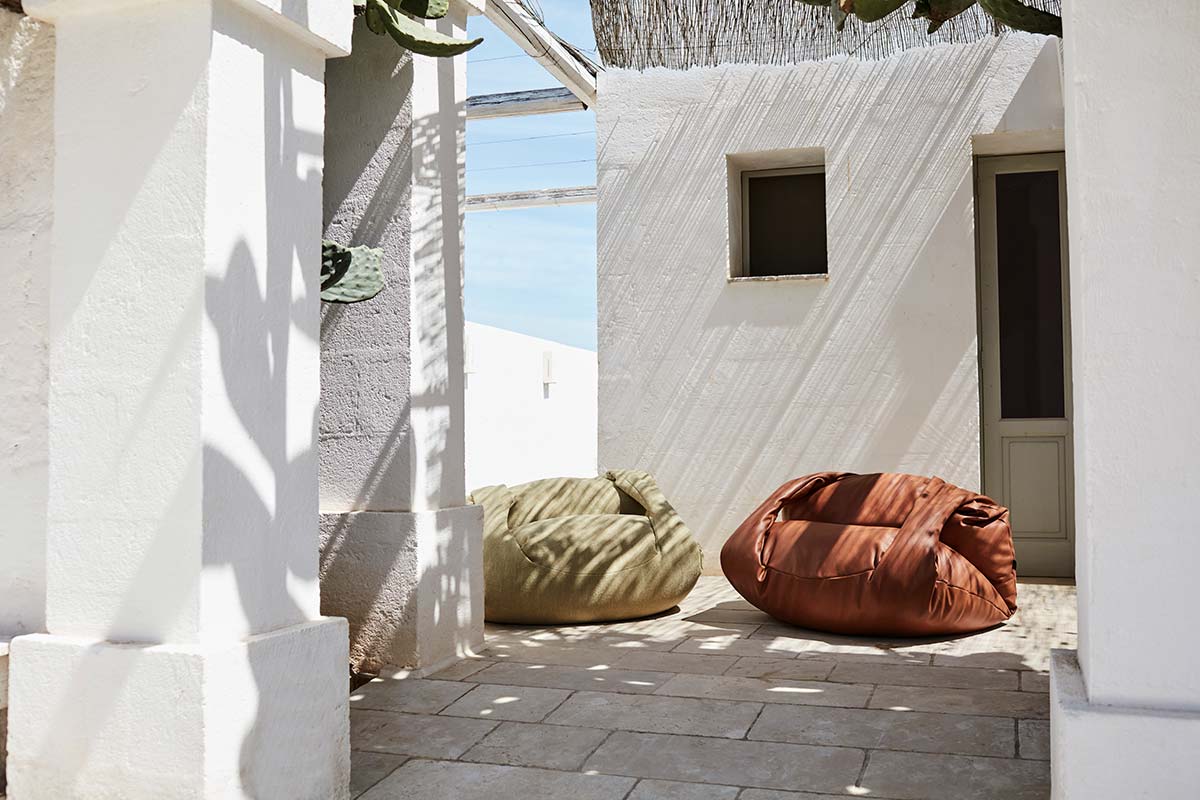
Which materials have you utilized, how were they chosen, and why? What is their ecological value?
The project began with the aim of creating a totally green product, fully respecting nature. To do this, we developed 100% sustainable fabrics, in collaboration with the Dutch studio of textile innovation Byborre. The filler is in recycled PET. The craftsmen of Natuzzi utilized my prototype, and together we developed the product. It took about ten phases to reach what I felt was the perfect result, with the best appearance and the best comfort.
Burri and Pistoletto have based their art on ‘humble material’ that becomes noble through the artistic gesture. Have they inspired you in this?
Not directly, though they are two artists I love and admire, so perhaps something was happening inside me on an unconscious level. I think enhancing a material through an idea and a project is a winning approach. I always say that anyone can create something with diamonds, while bringing light to something that does not glow is harder, though it is much more satisfying, and if you manage to achieve results it is much more powerful.
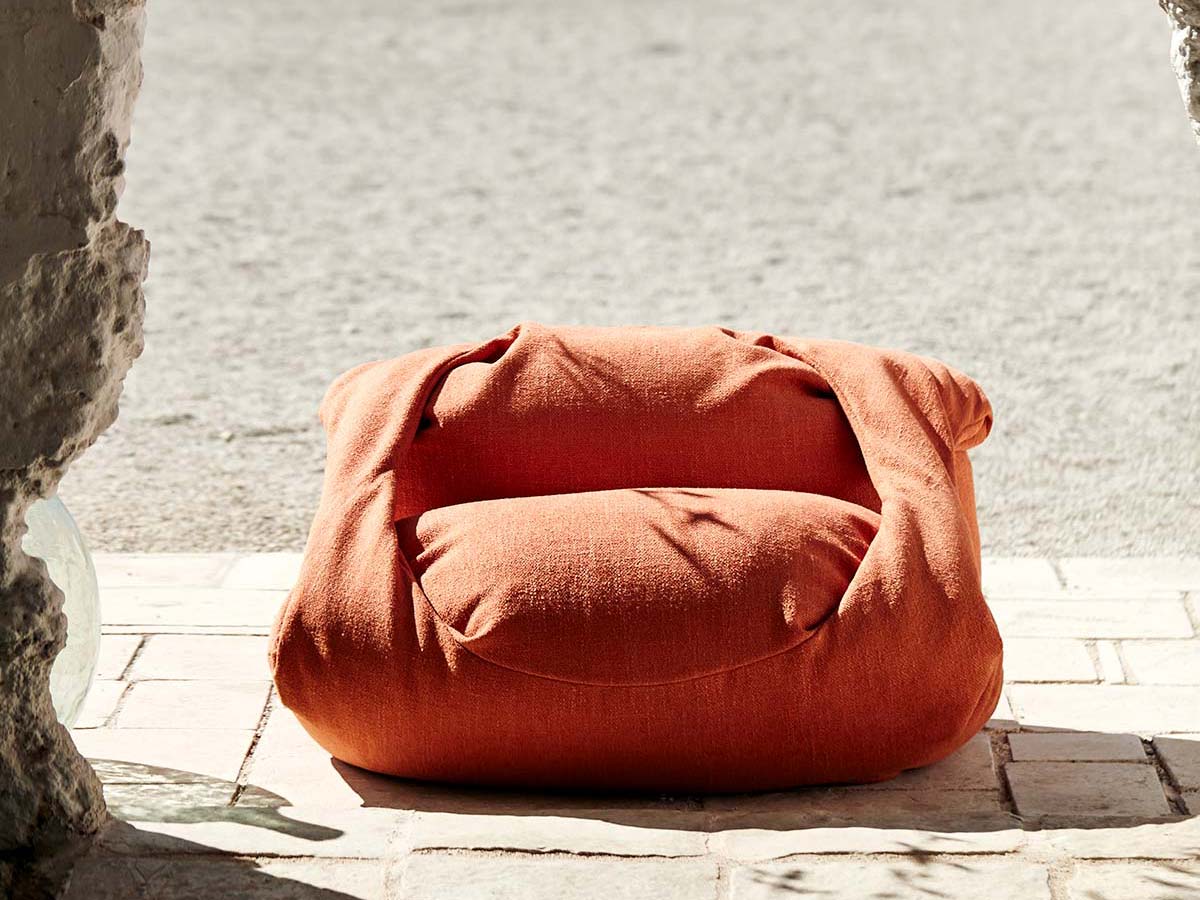
What was it like for you to work with ‘poor’ material, in the sense of recycled or reused?
It was a further motivation from an ethical standpoint. We conducted various tests to produce a totally green ottoman. I concentrated on the form, the idea the object could communicate when it was seen, but also on a sense of welcome, comfort, versatility, and the images from memory it would suggest. It was very interesting and motivating.
Art and design – what do you think about this increasingly frequent formula?
I love both of them, and I often think it is hard to find the borderline between them. Perhaps it depends on the context in which they are displayed. I am very proud to have brought a little bit of art into design, because I think it can offer a valid alternative to a market saturated with so many similar forms. I like the art design pieces that are sold in galleries because they are “true works of the art of design,” and it makes sense to take the care an artist puts into a work or a sculpture, and also project it onto the creation of a piece of furniture.
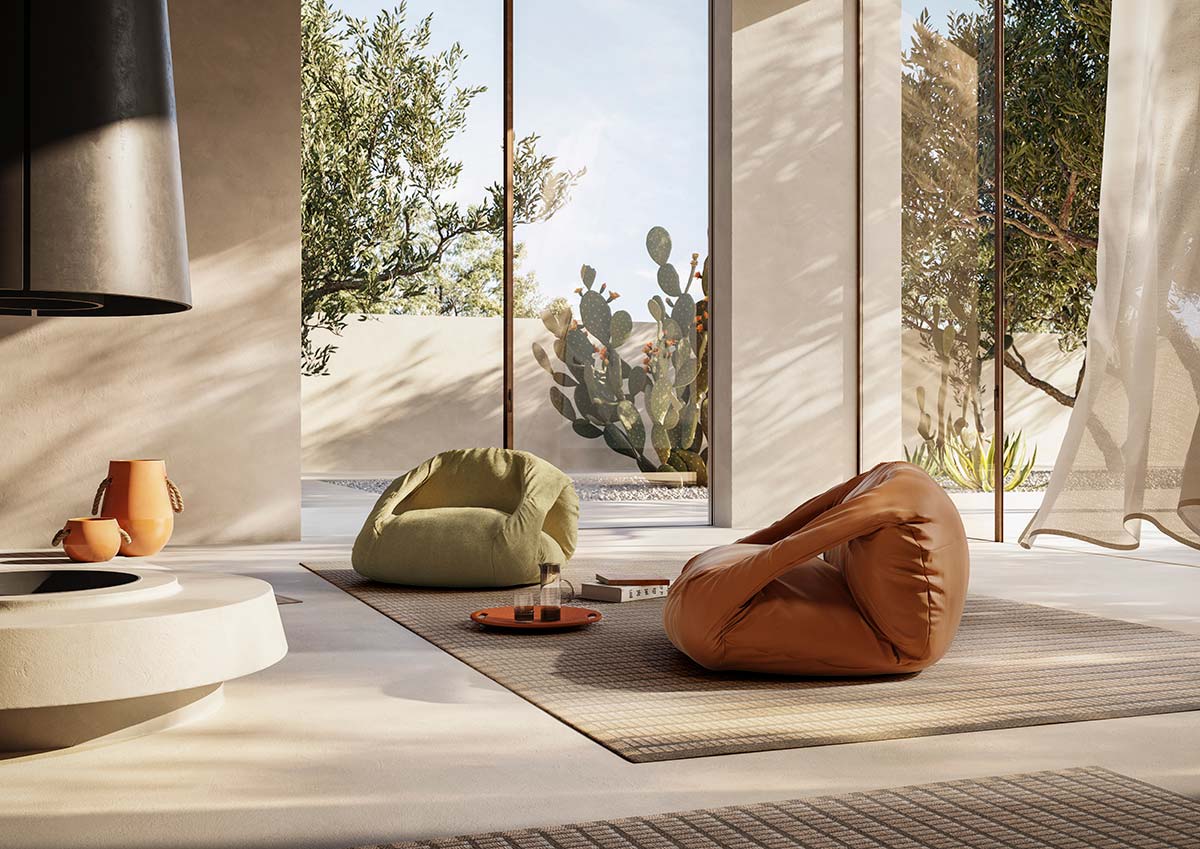
How should art enter the spaces of human beings?
With great nonchalance – it should not be invasive, and it should not be intimidating. This is very subjective, however, because for some people art should be disruptive, provocative, instantly noticed. For others, it should be silent and gentle. What I believe is that any work of art should enter a person’s space and put that person completely at ease, so it is a very subjective aspect. If you think about a work of public art, it is right for it to cause discussion; but if we think of the work in a private context, then it is the collector who decides what makes him feel good. As far as I’m concerned, art enters my home in a gentle way; the pieces I have purchased have an emotional value for me, on a very personal level.

